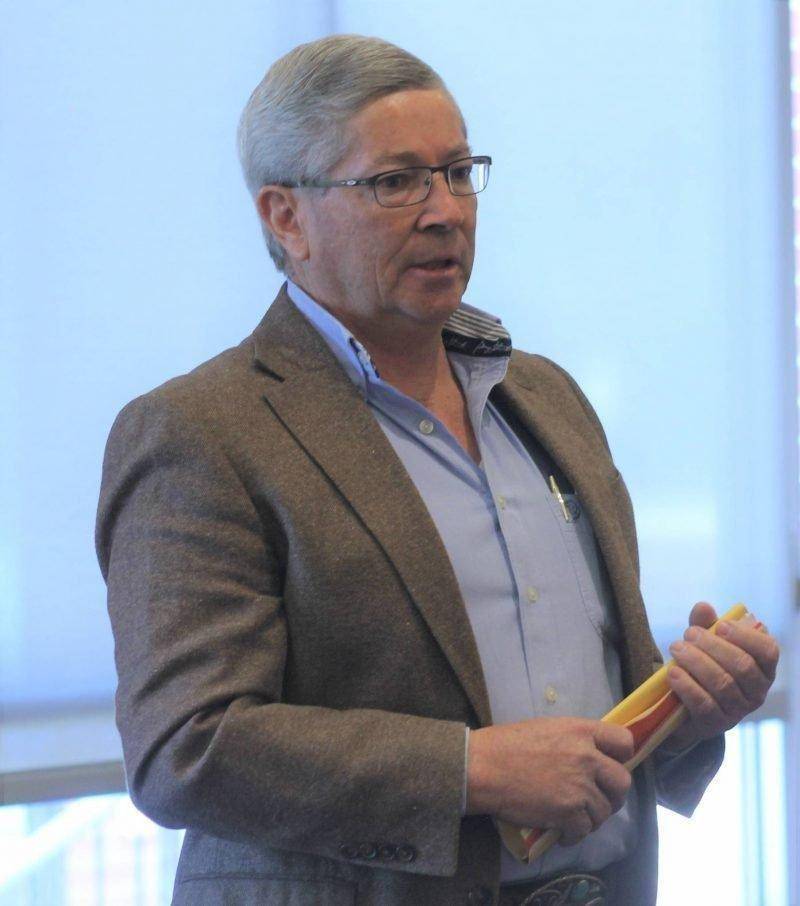BEAR Press Release
At a recent Business Expansion and Retention general board meeting, Representative Christine Watkins and Senator David Hinkins spent time explaining the work that was done at the Utah State Legislature during the session this winter.
One of the main topics was about what has been referred to as the “BEAR Bill,” House Bill 212.
The intent of the bill was essentially to have the amount of money that is given to BEAR programs around the state set in stone. In other words, it would have a floor to it. In the past, the BEAR programs have been funded from a fund called the Industrial Assistance Fund (IAF), and the money could be used for any number of things. Within it, the money for BEAR varied so much each year that programs could not be assured what they would and wouldn’t get between legislative sessions.
“I filed that bill last summer and heard very little from anyone in the Governor’s Office of Economic Development (the agency that handles the money for BEAR programs),” said Watkins. “Eventually, they called me up and said they wanted to talk about it.”
According to Watkins, it was not a happy conversation. They didn’t like the bill much and were actually against it. One of the provisions in the bill was that the money would be appropriated through the Governor’s Rural Partnership Board instead of through GOED, and that didn’t apparently please them.
“I talked to them about it and then I invited them to come to Castle Country and talk to the people that were involved in helping with the legislation,” she said. “They came to an executive board meeting and discussed it with BEAR members.”
Discussions at that meeting included why it was needed and what the purpose of it was. The meeting also spelled out why the local BEAR organization didn’t like the way the money had been administered, and just not the fact that no one knew how much there would be, but also that when materials and supporting documents were turned into GOED for payment at the end of each quarter, it took a long time to get the money, sometimes more than a another quarter.
“After that, they first said they were reluctant to support the bill and then later they told me that they had decided not to support it,” said Watkins. “I still went ahead with it and just before I was ready to present it in committee, they came to us and said they needed to find a way to cooperate on it.”
She said negotiations were tough, but that eventually they ended up with a bill that worked for both sides. Watkins said that one of the things she told them is that there needed to be more communication between GOED and each of committees that are in the counties, along with communication with the Governor’s Rural Partnership Board. One of the things GOED was concerned about was that if there was money in the fund by the end of October of each year that they wanted to use that money for other things they needed to support. She said the two sides agreed on that.
Watkins said that she and Senator Hinkins get a lot of support for bills they propose because of the passion they show in fighting for rural areas.
“Other legislators see that and realize that we need support,” she stated.
After a question from the audience about grumbling from the members of the legislature concerning state agencies influencing legislation and that there is concern in the body for the pressure that comes from agencies around the Governor’s office when a legislator wants to change a statute or provision, that at one point in the past session a bill was introduced to keep state agencies from doing anything either way on a bill except to provide information. But that did not pass, even though the feeling in the legislature is that something should be done about the problem. She said that while the legislature is only a part time body, often they feel that the governor’s office oversteps its bounds, so they have to take stands on some things to keep the balance of power.
“We don’t want to be like Congress in Washington D.C. where they have turned over a lot of their power to the executive branch or the judicial system,” she said. “This was proven by the override session we recently had.”
In that session, the legislature turned over some vetos the governor had placed on some bills that had passed in the winter. One bill that was overturned was HB198, which spells out procedures to force the Utah Attorney General to provide the Legislature written legal opinions when requested. Also passed was SB171, which allows the Legislature to intervene in court to defend the laws they pass. That would be in lieu of having the state attorney general’s office do it. The Governor had also vetoed $700,000 to implement some lawyers and legal staff for the legislature, and the body overturned that.
Watkins also reported that the legislature did a lot of legislation concerning mental health in the form of 10 bills, many of which affect rural Utah.
She then took the time to tell the group how bills are put together from the grassroots, how they are drafted, how they are assigned, how they are presented to the proper committees for them to be passed onto the House floor and how they either get passed or fail. She said if they pass the House then they need to go to the Senate and their committees, and the Senate can make changes to a bill. Then, with those changes, it goes back to the house. She said there is some difference between the two processes in each branch of the legislature, but there are also a lot of similarities.
Watkins said that in the last two years, a great deal of money has also gone into education. Based on what has been happening around the nation, there is a lot of emphasis on safety, and a lot of retrofitting will be going on to make schools more secure.
Hinkins said that he agreed with what Watkins had said about the legislature keeping the checks and balances in place.
“While the Governor’s office is important, we have the checkbook,” he said, explaining that regardless of what the Governor’s budget is when it is released in the late fall for the next year, the House and Senate have the last say. “We are often criticized for not following his budget.”
He also brought up the rainy day fund the state has and said that the legislature had enough money to put $850 million into it this year.
“In the last recession in 2009, the fund got down to $250 million and we continue to try to build it up again,” he stated.
One of the bills that was controversial was $600 million that instead of going to roads as it had been in the past, will now be going to education. The road fund is subsidized by the general fund, and this next year that is where that money is going instead.
One appropriation that went to the southeastern part of the state was $260,000 in on-going funding for two positions for helping with drug addiction treatment. The employees will be based in Carbon County, but will serve the entire southeastern part of the state.
Hinkins said they also approved an appropriation of $500,000 for the University of Utah to continue to study carbon fiber viability and uses. The fibers that are used in some products and more under development come from coal.
Hinkins said since he is the chairman of the Appropriations Committee, he doesn’t get time to introduce more than a few bills a year. But one bill he did introduce this last session will help with busing in the southeastern part of the state. That appropriation was for $500,000 and part of that helps Pinnacle Canyon School because they have a bus that picks up students in Emery County and brings them to the school in Price. He stated it was controversial because it was the first time there was a direct appropriation for transportation for a charter school in the state. The actual bulk of the money, however, will go to San Juan County to use to help keep their bus fleet intact, largely because in some cases buses have to travel so far and are often on poor roads there.
Hinkins also said there was extra money appropriated for the water diversion by the Carbon Golf Course that has been under construction since last fall. Because of all the rock they had to deal with it in revamping it, it was more costly than was expected to rebuild.
He said there was $500,000 appropriated for grazing improvement as well. That money is not just for the stock men who run cattle in the state but also helps out with wildlife as well. The money is used to improve the range so that it gets all the animals away from the riparian areas because they have other places to get water. That helps to control the sediment that goes into the reservoirs as well.
Hinkins also commented on the BEAR bill and said it came through in the last hours of the legislature and he helped to get it passed in the Senate by being able to go to leadership and push it through.
In addition, there was other money that was appropriated in the area, such as $600,000 for the Millsite State Park to put in more camping areas, $75,000 for a river walkway at the John Wesley Powell Museum in Green River and a training bill worth $1.2 million to teach rural businesses in 16 counties how to use the internet to their economic advantage.



